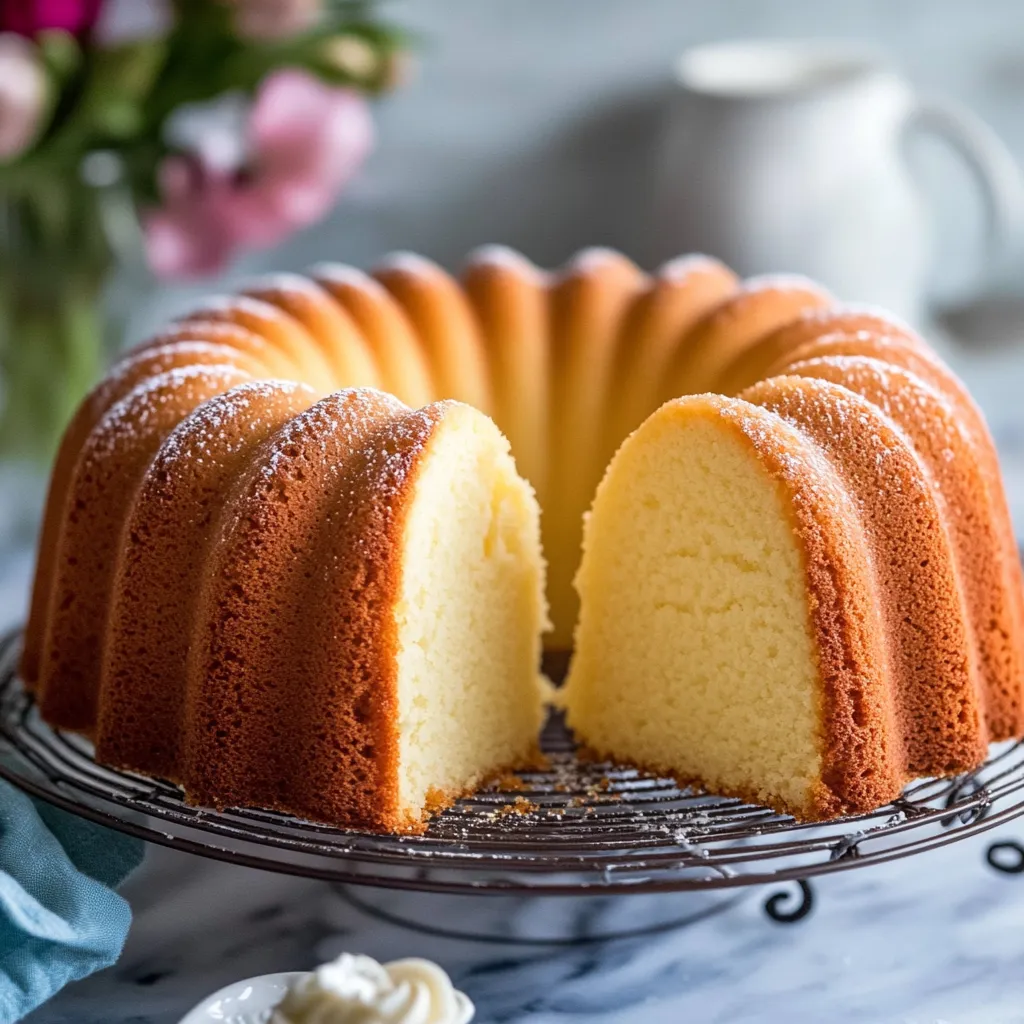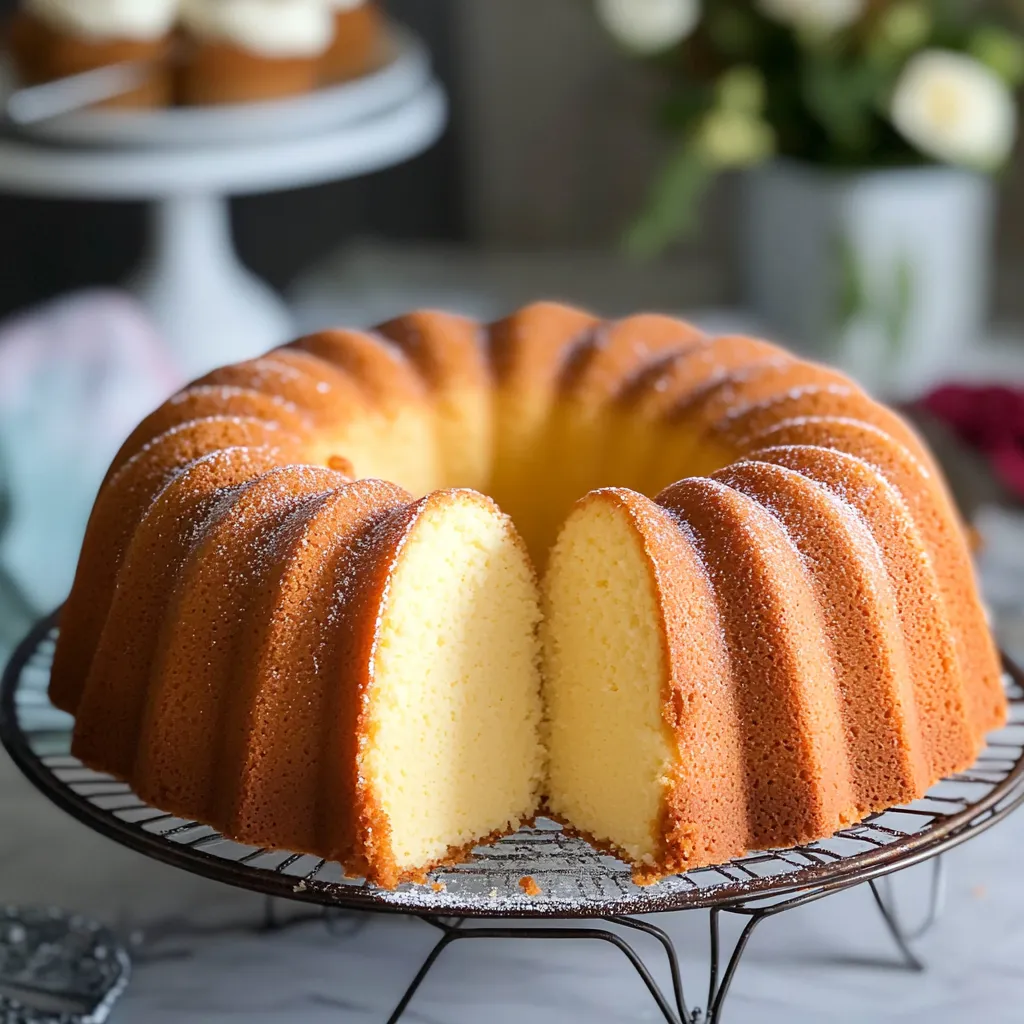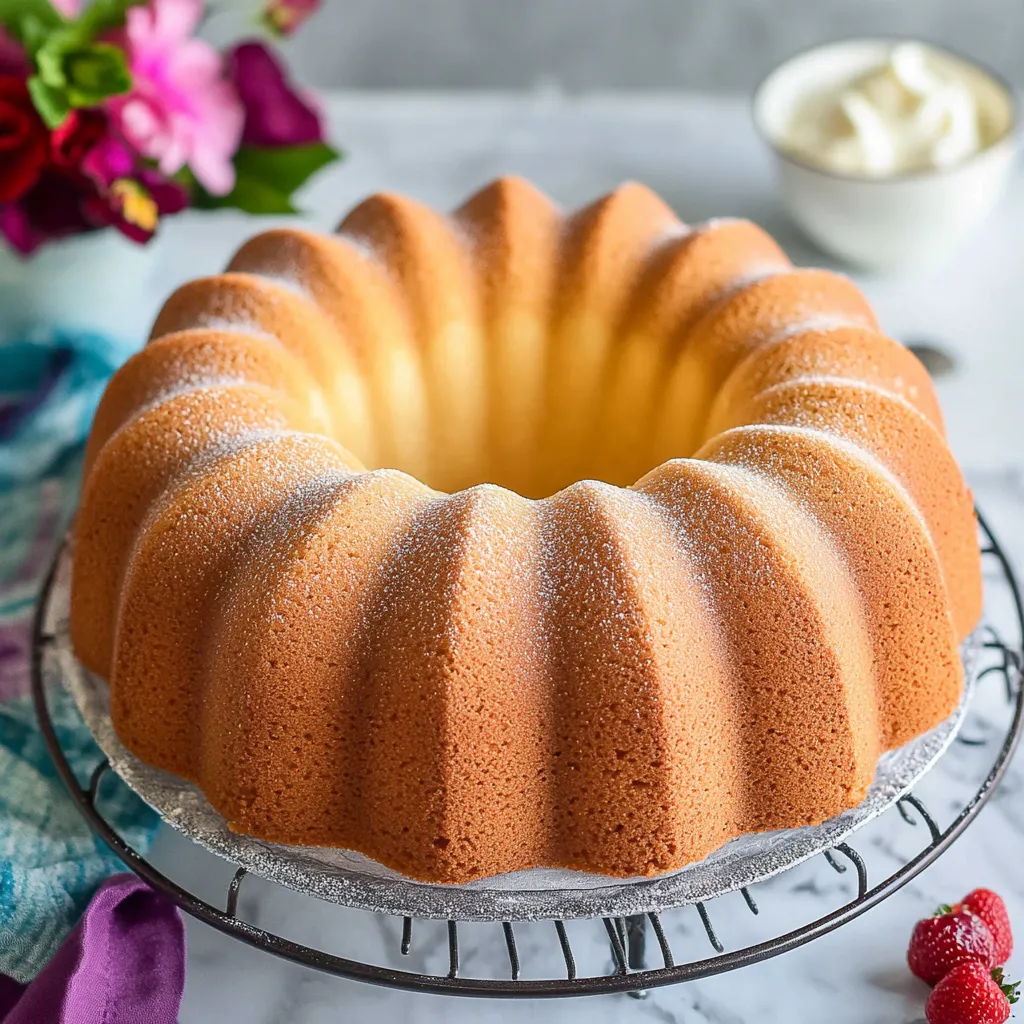 Pin it
Pin it
With cream cheese mixed in, this cake turns that usual heavy treat into something soft and rich. Each slice has an extra luscious bite that stays moist all week. Standard pound cakes can dry out and crumble, but adding cream cheese keeps things buttery smooth. Baking it nice and slow helps the crust get golden and lets the flavors mellow out. You'll taste gentle vanilla and just a pop of tang that makes this one different from the old-school kind.
I first made this when my aunt brought her special cake to a big family get-together. I cut a piece, expecting the usual, but right away that creamy, tangy bite made me ask how she did it. Cream cheese, she whispered, and she'd been using it for years. I learned her trick and now it’s my go-to for parties. Folks always want this one, saying they can't believe how smooth and fancy pound cake can taste without being overloaded on sugar or feeling heavy.
Dreamy Ingredients
- Salt: Sets off all the flavors and keeps things from being too sweet.
- Baking soda: Adds a bit of rise while leaving that classic tight crumb.
- Pure vanilla extract: Gives layers of aroma that bring the flavors together.
- Large eggs: They lock in moisture and help hold the structure.
- Granulated sugar: Adds airiness and that perfect crisp edge as it caramelizes.
- Unsalted butter: Lays the creamy foundation and lets the vanilla shine.
- Full fat cream cheese: Brings a creamy tang and keeps the cake soft as days go by.
- All purpose flour: Makes it sturdy but not tough—just right if you measure it right.
Easy Bake Steps
- Cooling Down:
- Let it cool in the pan for a quarter hour, then carefully pop it out and set it on a wire rack till it’s completely cool.
- Checking If It’s Done:
- Stick a toothpick or skewer in—if just a few crumbs stick, you’re good. No mushy spots.
- Bake It Off:
- Coat your tube pan with oil and flour, pour in the mix, smooth it out, and slide it into the oven for about an hour and fifteen minutes.
- Blending Flour:
- Whisk your flour, baking soda, and salt by hand before slowly folding them into the wet stuff on a low mixer setting. Gently stir so you don’t toughen things up.
- Add Eggs Next:
- Crack in one egg, mix, then toss in the next. Finish off by stirring in a splash of vanilla.
- Sugar In, Please:
- Turn your mixer to medium, shower in the sugar a bit at a time. Scoop down the bowl every so often until it looks fluffy.
- Creamy Start:
- Mix together your cream cheese and butter for three minutes, scraping the sides a lot, until everything’s light and smooth.
- Prep Time:
- Set out your butter, eggs, and cream cheese till they’re not cold, and get your oven warmed up to 325°F.
 Pin it
Pin it
When I was a kid, I watched my grandma mix up cakes by hand with a big wooden spoon. She’d listen closely, swearing the cake would ‘tell’ her when it was ready. I stick with my skewer for testing, but I still believe patience is key. The cream cheese—my little twist—keeps that tender texture while giving each bite a depth my grandma would have loved. Folks usually can’t quite guess what makes it special, and honestly, that’s my favorite part.
Tasty Ways To Enjoy
This cake goes great with fruit, tea, or coffee. Warm it up and add some grilled peaches or a scoop of ice cream for a treat that’ll wow anyone.
Fun Flavor Swaps
Try mixing in almond extract, a punch of cocoa powder, or a spray of lemon or orange zest. Sprinkle in cinnamon or nutmeg during the holidays for a cozy kick.
Storage Tips
It’s fine on the counter for up to five days. Tuck it in the fridge for over a week or freeze slices for a handy treat for months.
Quick Fixes
If the middle drops, it might be your oven running hot. Trouble with cake sticking? Grease it and drop in parchment at the bottom for smooth removal.
 Pin it
Pin it
Frequently Asked Questions
- → Why does this kind of pound cake come out dry sometimes?
- Too much baking or squashing down the flour too much can dry it out. For this version, cream cheese brings lots of moisture and going slow at 300°F stops dryness. Make sure you scoop flour into your cup, don’t dump it in straight from the bag, or it’ll pack and dry out.
- → Is it okay to swap in salted butter?
- You can, but only use a half teaspoon of added salt instead of a whole one. Plain butter is a bit better because you get to pick how salty things get, which helps texture and flavor come out right in cakes.
- → How do I check if my cake is baked all the way?
- Stick a skewer or skinny knife deep in the middle. It should pull out clean or with just a crumb or two—no sticky batter. Toothpicks usually aren’t long enough for big bundt cakes. Also check for a golden top and edges just pulling back from the pan.
- → Can this cake go in the freezer?
- Totally! It’ll keep for up to three months. Just wrap it up good in cling wrap, then a layer of foil. Slice it or keep it whole. Let it thaw in the fridge overnight, then let it come up to room temp before slicing.
- → Why do I have to add one egg at a time?
- Drop in each egg by itself so it mixes in fully and builds a good texture. This way, air stays in the batter so you get a rise and a soft crumb. Dumping all the eggs at once can mess up the mix and end up with a flat, heavy cake.
- → Can I try adding some other flavors?
- Go for it! Just swap in a teaspoon or two of almond, toss in grated lemon zest, or fold in chocolate chips. Want a marble look? Mix a little batter with cocoa, swirl it through, then bake.
